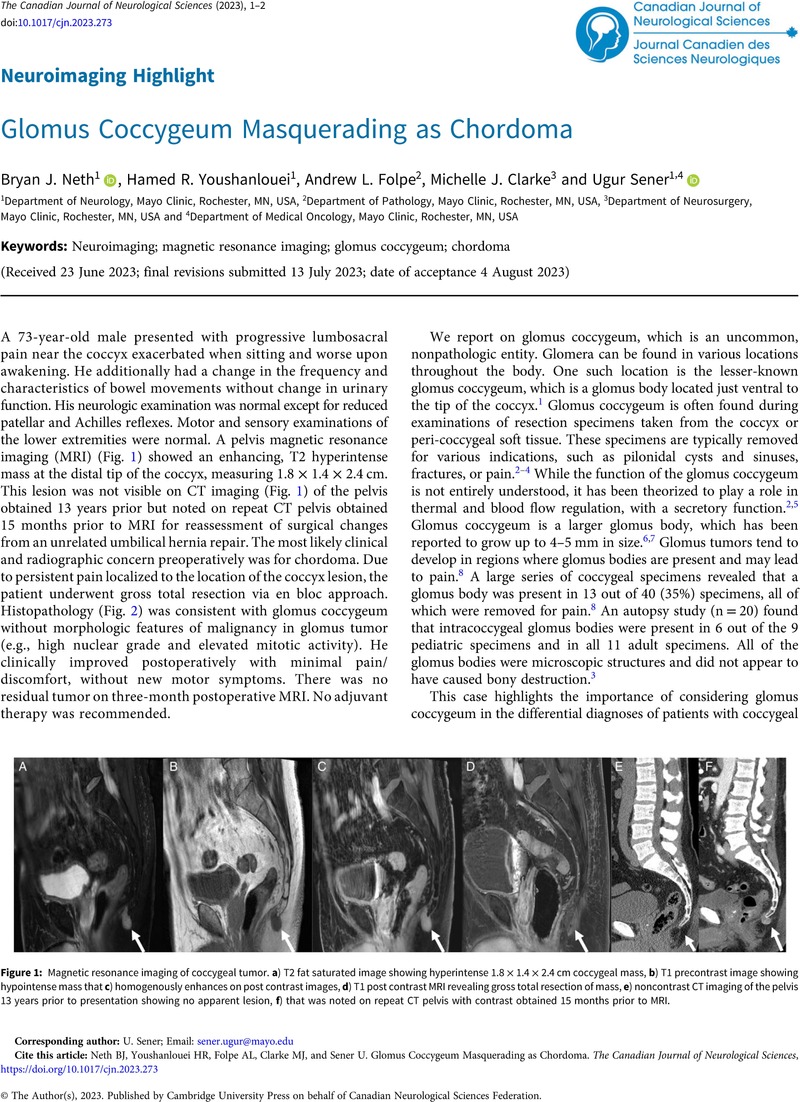No CrossRef data available.
Article contents
Glomus Coccygeum Masquerading as Chordoma
Published online by Cambridge University Press: 14 August 2023
Abstract
An abstract is not available for this content so a preview has been provided. Please use the Get access link above for information on how to access this content.

- Type
- Neuroimaging Highlight
- Information
- Copyright
- © The Author(s), 2023. Published by Cambridge University Press on behalf of Canadian Neurological Sciences Federation
References
Santos, LD, Chow, C, Kennerson, AR. Glomus coccygeum may mimic glomus tumour. Pathology. 2002;34:339–43.CrossRefGoogle ScholarPubMed
Rahemtullah, A, Szyfelbein, K, Zembowicz, A. Glomus coccygeum: report of a case and review of the literature. Am J Dermatopathol. 2005;27:497–9.CrossRefGoogle ScholarPubMed
Albrecht, S, Hicks, M, Antalffy, B. Intracoccygeal and pericoccygeal glomus bodies and their relationship to coccygodynia. Surgery. 1994;115:1–6.Google ScholarPubMed
Albrecht, S, Zbieranowski, I. Incidental glomus coccygeum when a normal structure looks like a tumor. Am J Surg Pathol. 1990;14:922–4.CrossRefGoogle ScholarPubMed
Bell, R, Goodman, S, Fornasier, V. Coccygeal glomus tumors: a case of mistaken identity? JBJS. 1982;64:595–7.CrossRefGoogle ScholarPubMed
Gatalica, Z, Wang, L, Lucio, ET, Miettinen, M. Glomus coccygeum in surgical pathology specimens: small troublemaker. Arch Path Lab. 1999;123:905–8.CrossRefGoogle ScholarPubMed
Maggiani, F, Kashima, T, Ostlere, SJ, Athanasou, NA. Immunophenotypic analysis of glomus coccygeum associated with coccygodynia. Skelet radiol. 2011;40:1455–9.CrossRefGoogle ScholarPubMed




